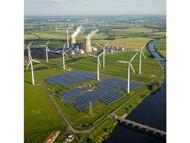Renewable Portfolio Standards - ORIGINAL CONTENT
- By:
- Edward A. Reid Jr.
- Posted On:
- May 5, 2025 at 6:00 AM
- Category
- Energy Policy, Climate Change
Renewable portfolio standards (RPS) and clean energy standards (CES) are either requirements or goals for energy producers or providers to supply energy from low- or zero-carbon emission sources. US EIA
The Trump Administration has ended the federal government focus on Net Zero and refocused on energy dominance. This refocus includes assuring that the US has sufficient economical energy to satisfy the demands of a vigorously growing economy. The Administration has also announced its support for restarting shuttered coal generators and constructing new clean coal power plants as well as new natural gas generators. The Administration position allows electric utilities to select the generation mix which best suits the needs of their growing customer base.
The Administration is also expected to dramatically reduce or eliminate the federal incentives currently available for renewable generation, storage and transmission interconnections. Utilities would still be able to select wind, solar and storage options as part of their generation portfolios, though without the support of substantial federal subsidies.
However, most US states have legislated RPS and utilities in those states and their utility commissions will not have the full flexibility offered by the Administration positions.

Utilities in the RPS states will be required to increase their renewable generation fleets in line with the legislated percentages and deadlines or targets. The states with RPS will continue to see their electric rates increase as renewable generation is expanded in parallel with the conventional generation required to provide backup for the intermittent renewable generation. These increases will result both from the incremental returns required by the increased generation investment and from the effects of Dutch Auction pricing on the entire generating fleet.
As the percentage of generation from renewables increases, the percentage of generation from the conventional generation fleet, which must remain capable of meeting grid demand in the absence of renewable generation output, continues to decrease, adversely affecting the operating economics of the conventional generation fleet. Plant retirements resulting from aging or unacceptable operating economics would eventually require the addition of energy storage capacity to provide renewable generation backup or the installation of Dispatchable Emission-Free Resources (DEFRs). Either of these alternatives would require substantial investment in new generation or storage facilities, significantly increasing utility ratebases and thus utility rates.
The developers of data centers and artificial intelligence facilities have determined that renewable generation is not a suitable source of power for their high demand, continuous operation facilities. In states without RPS, these developers might choose to take their power from the local grid. However, in states with RPS they might choose to install their own dedicated generation systems to assure the desired reliability and stability. It is not certain whether these dedicated generation systems could be fossil fueled in RPS states, since they would not be part of the state utility grid. That decision would depend of the specific wording of the state RPS and might become the subject of litigation.
The differences in state utility rates resulting from the different generation fleets would likely result in increased competition among the states for data centers and other new industrial customers.


